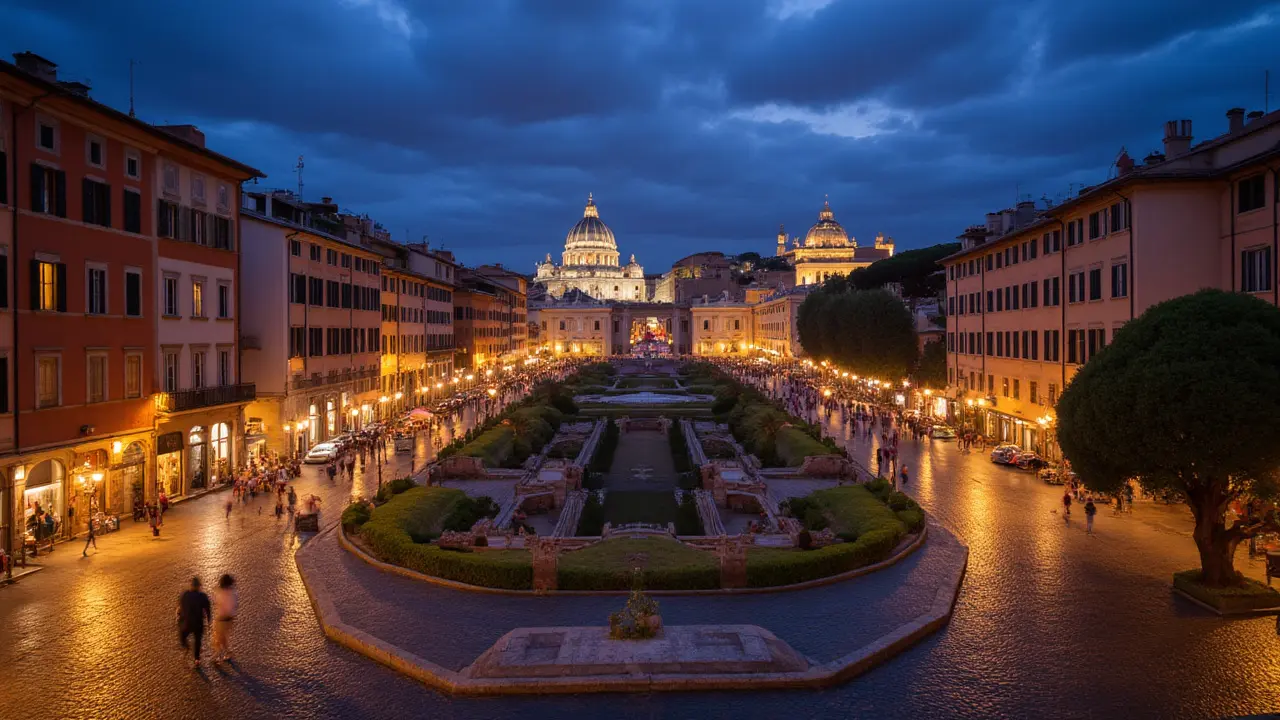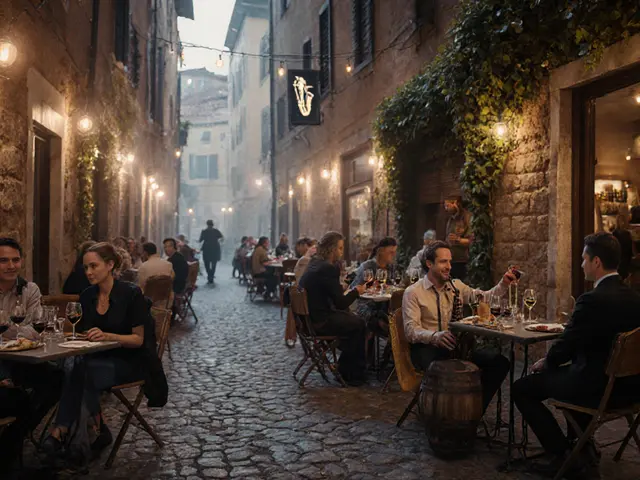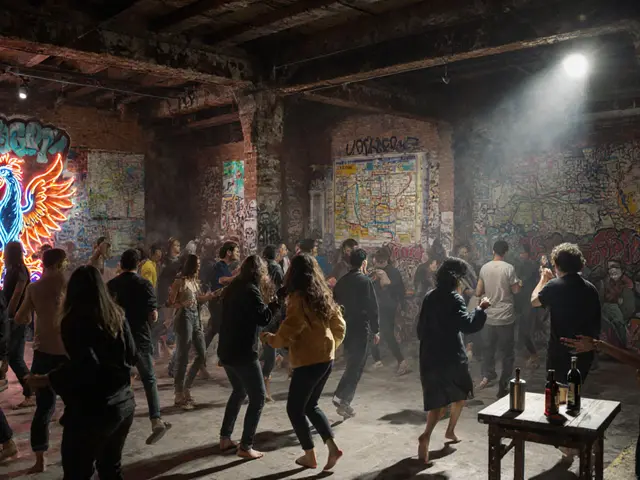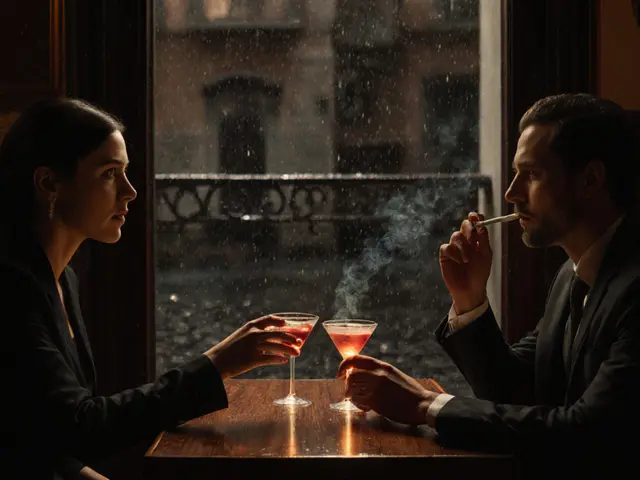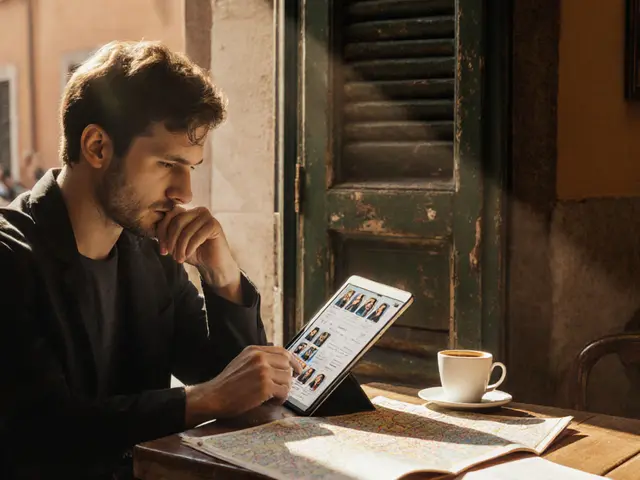During the hot Roman afternoons, the city feels like it’s holding its breath, waiting for the sun to slip away. When dusk shows up, something wild happens—Rome really comes alive. The crowds thin, but the heart of the city beats faster. The Colosseum glows golden. Café lights spill onto cobblestone. It’s a different city after dark—a kaleidoscope of old secrets and new adventures, impossible to capture in daylight. Most first-timers barely scratch the surface. But anyone who’s wandered Rome at midnight with a gelato in hand knows the city’s real show happens with the moon above.
The Transformation: How Rome Changes When the Sun Goes Down
Day and night in Rome feel like two separate cities. When the sun sets and the buses empty out, monuments you strained to see through selfie sticks suddenly reveal their quiet dignity. The Colosseum at night is hypnotic—lit in golden light, it’s almost easier to imagine gladiators and emperors, minus the daytime crowds. Same goes for the Forum. Ghostly, silent, you can practically feel the ancient stones keeping secrets.
The Trevi Fountain is a wonder any time, but try seeing it after midnight. Instead of pushing through tour groups, you might find just a handful of people lingering, tossing coins, sharing jokes, or sneaking a first kiss. The fountains sing louder when the world around them hushes. It’s the same story at the Spanish Steps—locals might hang out with guitars or beer, but the frantic, bustling tourist chaos is long gone by late evening.
And don’t forget the Pantheon. By night, the dome is even more mysterious, shadows stretching along twisted alleys. Rome’s architecture, built to impress emperors and popes, was designed to take your breath away when you least expect it. Night brings out another side of these old stones—timeless but never lifeless. Street musicians drift from piazza to piazza, and the smell of espresso and warm pastries floats through the Trastevere quarter. If you’re lucky, you’ll stumble upon an impromptu jazz session or a midnight poetry circle without even planning it. That’s the trick with Rome: sometimes, not planning gives you the best stories.
There’s a practical side, too. The heat relents, making those long walks between ruins and markets way more enjoyable. Locals, escaping their cramped apartments, spill onto the cobble-stoned streets and fill up terrace bars. Suddenly, there’s room to breathe, chat, and even dance. You see Rome as Romans do—slower, unhurried, letting the night stretch out.
One little-known fact: many of the famous monuments offer special summer-night opening hours. You can explore the Colosseum by lantern, or walk the Vatican Museum halls under starry skies—if you snag a ticket early. Ever joined a ghost tour of Rome? It’s equal parts spine-tingling and hilarious, perfect for anyone who wants a dash of ancient scandal or two.
Night Attractions: Where to Go and What to See After Dark
If you think your sightseeing ends when museums close, you’re missing half the magic. Some of Rome’s best treasures aren’t locked behind doors—they’re alive in the open air, especially at night.
The basics are unmissable but worth repeating: the Colosseum bathed in golden light, Piazza Navona buzzing with street performers, and the Trevi Fountain glowing like a movie set. Want to skip crowds? Go after 11 p.m.—a secret most guidebooks bury in the fine print. Couples and solo wanderers can linger as long as they want, soaking up the hush and those legendary views.
Rome’s riverside comes alive at night. Between June and September, the banks of the Tiber bustle with open-air markets, pop-up bars, and street-food stands serving everything from Sicilian cannoli to spicy Roman sausages. There’s music, film screenings, and people-watching galore. Locals call it "Estate Romana." If it’s your first time, don’t just walk the river—stop, grab a drink, and strike up a chat with someone at a plastic table. Chances are, you’ll get insider tips on what’s happening nearby.
Feeling adventurous? Dive into Trastevere. This neighborhood keeps its Old World charm but wakes up at night. It’s a patchwork of boho bars, late-night pizza windows, indie art galleries, and hidden-away jazz cellars. The labyrinth streets twist behind the river, and somewhere a dog barks as glasses clink. Be curious—duck into a packed osteria, or follow the sound of laughter to a crowded piazza. One tip: the later it gets, the livelier it becomes. Local students and artists make sure there’s action till sunrise.
And then, there’s Aventine Hill. Most people forget about Rome’s seven hills, but at night, the quiet gardens and keyhole views offer sweeping panorama of the city sparkled with light. One favorite secret: peek through the famous keyhole at the Piazza dei Cavalieri di Malta just as the city glows—a perfect shot of St. Peter’s dome framed by hedges.
Rome’s churches—nearly a thousand—mostly close at sunset, but some like Santa Maria Maggiore or San Luigi dei Francesi keep their doors open later. Candlelight, hushed steps, and priceless Caravaggio paintings without crowds invite a different kind of awe after dark.
Still hungry to explore? Head to the Janiculum Terrace (Gianicolo), a local lookout with a stunning view over Rome’s tangle of roofs and domes. The city looks its best when the chaos is kept at a respectful distance, and you’re sharing a bottle of wine with friends by the old cannons.
For those chasing something unusual, haunted Rome tours, ancient catacomb walks, or underground crypt explorations tick the “unforgettable” box. These rarely feel like mere tourist traps—there’s a raw edge to the tales guides tell, and some spooky Roman history is just the right fit for a night adventure.
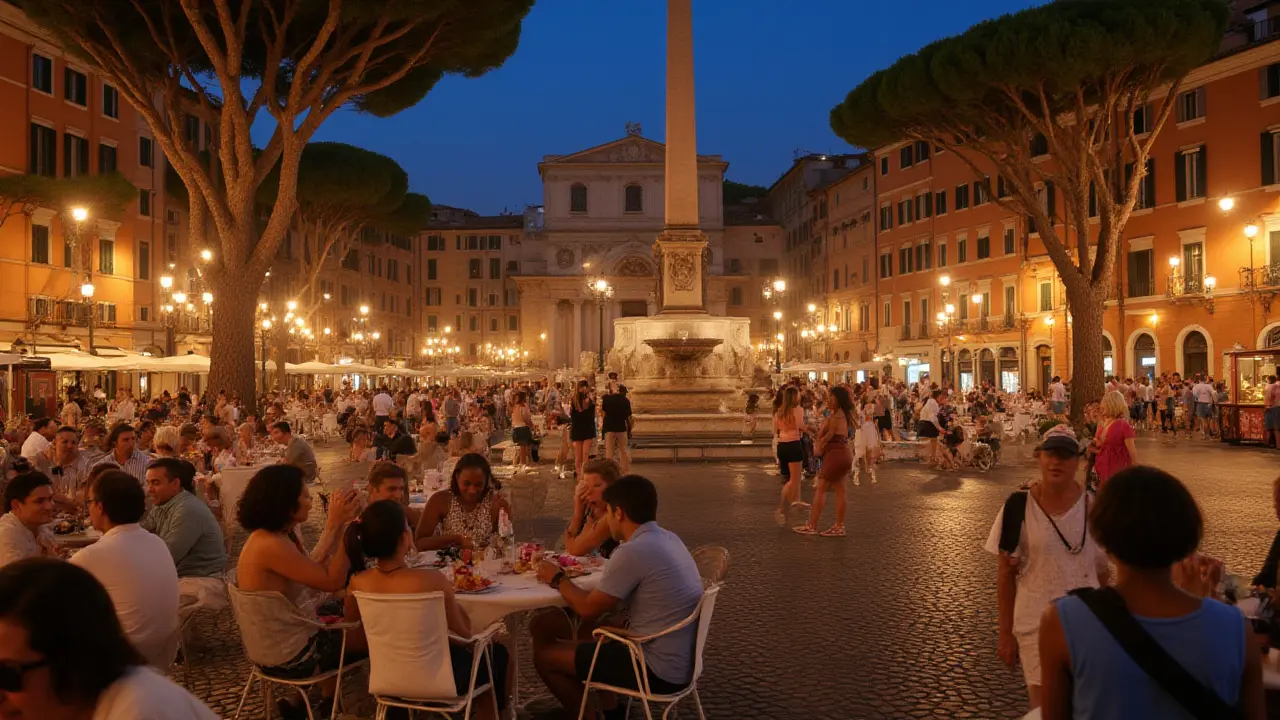
Nights Full of Stories: Late-Night Culture, Food, and Life
Romans say, "Una notte a Roma non si dimentica"—one night in Rome is not easily forgotten. Evening culture here is about more than nightlife; it’s about savoring time itself. From slow meals that last hours to random street parties, there’s no rush.
Start with aperitivo. It’s the city’s grown-up answer to happy hour, but better. Find a bar with a view—maybe on Via del Governo Vecchio or Campo de’ Fiori. Order a spritz or a Negroni and nibble on artichoke crostini or suppli. It’s not just snacking; it’s social glue. Don’t be shy—chatting with strangers is a Roman tradition.
Dinner stretches into the night. Roman restaurants rarely open for dinner before 8 p.m., and the best meals aren’t rushed. Classic trattorias in Testaccio or Monti don’t even pretend to chase Michelin stars—expect cacio e pepe or carbonara that tastes like it was invented yesterday. It’s not all fancy, either. You’ll find late-night pizza al taglio (by the slice), bakery windows selling hot maritozzi buns, and gelato shops on nearly every block. Want a tip? Always ask where the locals buy theirs. Chances are it’s not right on Piazza Navona or the Pantheon.
If you’re in the mood for live music, head to San Lorenzo or Pigneto. These student neighborhoods fill up with indie bands and DJs spinning Roman funk till late. Don’t expect velvet ropes and bottle service—just sweat, beats, and cold beer under colored lights.
The movie buffs will love Rome’s summer cinema under the stars. Classic films are screened in historic courtyards and city squares, sometimes for free, as part of the city’s "Cinema all’Aperto" series. Watching Italian cinema surrounded by 2,000-year-old ruins isn’t something you’ll find anywhere else.
Nighttime in Rome isn’t only for the young. Families stroll for gelato, old friends argue over espresso, and dogs chase pigeons in moonlit parks. There’s a rhythm that pulls everyone into its orbit, whether you’re clubbing at a posh Villa Borghese spot or sipping sweet wine on a quiet balcony.
One quirky, ancient tradition that still survives is the midnight stroll, or "passeggiata." Romans love to walk, especially when the night air cools the city. You’ll spot whole generations drifting from square to square, gossiping, licking ice cream, or just soaking it in. Try it—let your feet lead, and you’ll discover more than any guidebook promises.
Insider Tips for Experiencing Rome’s Nighttime Magic
There’s no single right way to enjoy Rome at night, but a few tips can seriously up your game. First, walk as much as possible—taxis can get stuck in traffic or miss half the magic hidden in Rome’s labyrinth alleys. Comfortable shoes are non-negotiable; those cobblestones are ancient and nearly as hard as Roman opinions.
Plan for late meals. Most of the best local trattorias are just getting started around 9 or 10 p.m. Don’t worry about being too late—Romans expect you to linger. If you’re hoping to hit a famous landmark without crowds, aim for after midnight during summer. The difference is almost magical at the Trevi Fountain and Spanish Steps.
Mind your stuff, but don’t be paranoid. Pickpockets do operate in tourist magnets and packed night buses, but if you use common sense, you’ll be fine. Bring only what you need.
Want to connect with locals? Start on the Tiber banks during summer fests, or grab a beer in Trastevere where crowds spill into the alleys. Roman nights are made for conversations—you’ll likely be invited to join a table, especially if you greet people with a simple "ciao."
If you’re planning to hit clubs (like Shari Vari or Goa), remember Italian dress codes lean stylish. No flip flops or shorts, even when it’s warm. And always check hours—some venues change opening days without much warning.
For romantic views, bring a bottle of wine to Aventine Hill or the Gianicolo at sunset. It’s totally normal for groups of friends or couples to hang out till late, sometimes with a guitar in tow. Don’t rush back to your hotel—soak in the skyline and the sound of distant bells.
If you’re craving something totally different, track down a midnight ghost tour or catacomb walk. Night guides are often born storytellers, spinning ancient gossip you won’t read in any textbook. Ghost walks aren’t just spooky; they’re a hilarious deep dive into the city’s weirder history.
And don’t forget the late-night bakeries. Romans have a serious sweet tooth, and tiny unmarked pasticcerias churn out hot maritozzi buns or sfogliatella for the insomniac crowd. If you see a line at 1 a.m., join it. That’s where the good stuff is.
One last thing: pause often, watch, and listen. Rome at night isn’t about squeezing in every listed “must-see.” It’s about drifting, talking, and letting ancient energy seep in. You won’t see everything, but the moments you do catch—mist rising from the Tiber, a violin by candlelight, laughter echoing in a half-empty piazza—will stick in your head for years. And isn’t that what travel’s really about?
